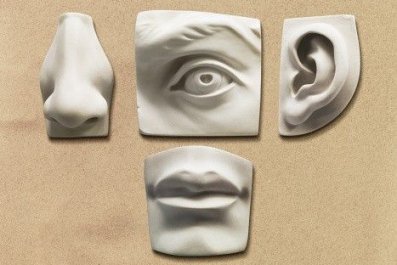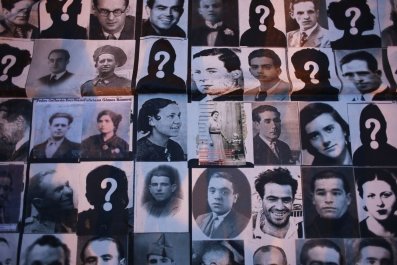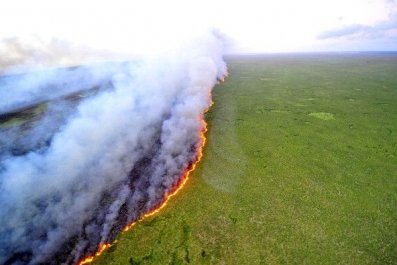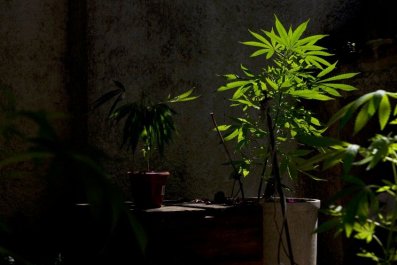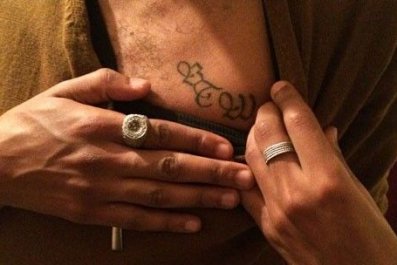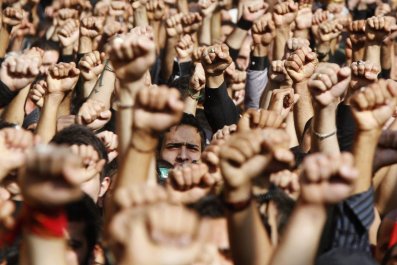This is what we know about Vivian Maier: She was born in New York City, of French descent, in 1926, and died in 2009. She lived mostly in Chicago but traveled the world alone for eight months in 1959. She was tall - around five-foot nine - kept her hair in a short crop, and had a penchant for wearing men's clothing, including oversized jackets, floppy hats, and army boots. She also took 150,000 photos, only a tiny percentage of which were seen by anyone other than herself.
Maier was rescued from obscurity when a 26-year-old Chicago real-estate agent and inveterate thrifter named John Maloof bought a crate of her negatives for $380 at a delinquent storage-box auction in 2007. Maloof flipped through the negatives briefly, then stowed them away in a closet for six months before he began scanning them, digitally developing the final photos. What he found was a trove of hitherto unknown street photography - snapshots of daily life in Chicago and New York that some critics believe rival the best of American photographers of her era: Diane Arbus, Robert Frank, Garry Winogrand.
When Maloof finally found a name among the materials in the crate, he googled "Vivian Maier" and came upon an obituary filed only a few days before. Maier had been a longtime nanny in Chicago. The short notice mentioned nothing about her photography. Maloof then tracked down and bought other boxes sold at the same auction, gathering together 90 percent of the known photographs Maier had hidden in storage (the remaining box was purchased by a different collector) and has embarked on a quest to "put Vivian Maier in the history books," as he explains in a documentary he co-directed called Finding Vivian Maier, which debuted in New York recently.
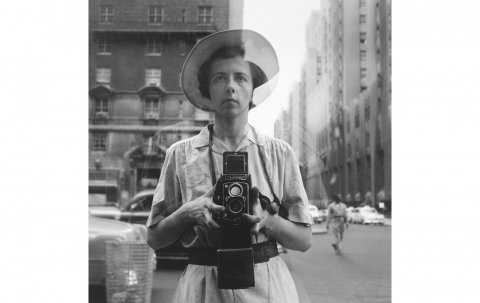
The film tells the story of a woman who created art in secret for more than 50 years. Through a constellation of interviews with families who hired her, children she took care of (now long grown up) and storekeepers who developed her film, a complex portrait of Maier emerges. She clearly knew she was making significant work. In a letter to a printer, she refers to a series of photos she took in the tiny French Alps village of Saint-Bonnet-en-Champsaur as masterpieces. (That village was where she spent part of her childhood, after her father left the family.) So why didn't she ever show her pictures to anyone?
The inscrutability of that mystery is driven home in an exhibition of her self-portraits on display at Howard Greenberg gallery in midtown Manhattan through December 14, organized in collaboration with Maloof. (She is also the subject of ongoing exhibitions at galleries in Paris and Moscow, as well as at Brandeis University.) Maier playfully and intelligently depicts herself reflected in bathroom mirrors and storefront windows, fracturing space with mirrored images bouncing off other mirrors. In one color photo from the 1950s, she shoots herself in a framed mirror that hangs next to several paintings, casting herself as an artwork.
The exhibition is like a lightning round of Where's Waldo? with Maier as the main character. Her shadow, topped by her signature masculine hat, falls near a woman sunbathing in a bikini. Maier's face appears in a lineup of posters, or her laser-focus stare bores into a pair of circular mirrors. Maier's gaze is frank, proud and at times sardonically amused, enjoying the game she plays with her camera. Her eyes and the twist of her smile are so engaging that it's difficult to remember that these pictures were never seen before, perhaps never meant to be seen.
Self-portraits often communicate certain ideas about their subjects - Rembrandt painted himself as an ambitious artist, then a wealthy burgher; Courbet a bohemian wild man. Selfies - the Oxford Dictionary's word of the year - are snapped with smartphones to share with other people. Maier's self-portraits, however, were invisible.
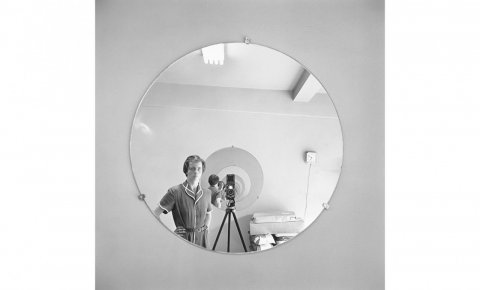
The compulsive nature of Maier's photography hints at a dark side. She kept padlocks on her rooms at the homes she worked in and was a hoarder, particularly of newspapers. She hated and feared men, leading some to suggest she was abused as a child. Most disturbingly, she at times allegedly abused - or at least acted violently with - several of the children in her charge. One woman tears up during an interview in the film as she recalls how Maier force-fed and choked her as a child. Another recounts the photographer destroying her toys in front of her. Maier may have been destitute late in life before several men that she had cared for as children bought her an apartment in the Rogers Park neighborhood of Chicago, where she whiled away her days sitting on a bench and staring out at Lake Michigan. Locals remember her as an eccentric who ate food straight out of cans.
All that could suggest mental illness, or it could be the consequences of a lifetime of stoppered talent. Perhaps Maier didn't show anyone her work because she feared judgment; the art world of the 1950s and 1960s was even more dominated by men than it is today. She may have never wanted it shown at all, as one of Maier's few friends argues, though her letters suggest otherwise. The situation is in some ways similar to that of the artist Henry Darger, a reclusive Chicago janitor who created mammoth narrative collages that were discovered hidden away in his apartment just before his death in 1973. Darger is considered something of an "outsider artist," a controversial category that includes art made by the untrained (Grandma Moses) and the insane (Martin Ramirez, perhaps). Even so, Darger is influential for contemporary artists and has been collected by the Museum of Modern Art.
Struck by the singular quality of the images, some have argued that the Maier phenomenon is an elaborate hoax. Yet her photographs are so powerful and their 1950s and 1960s scenes so difficult to fake that the allegations seem absurd. "So often contemporary photography needs something.... It needs someone to like it, share it or comment to it," photographer and critic Elizabeth Avedon, a longtime student of Richard Avedon who was married to his son, writes in a catalog essay on Maier. "Vivian Maier's work is extraordinarily different in that it only needed to be made." This is what sets her photographs apart from the images we are constantly bombarded with in our attention-based economy. They are unique in their resilience and their indifference to our gaze.




